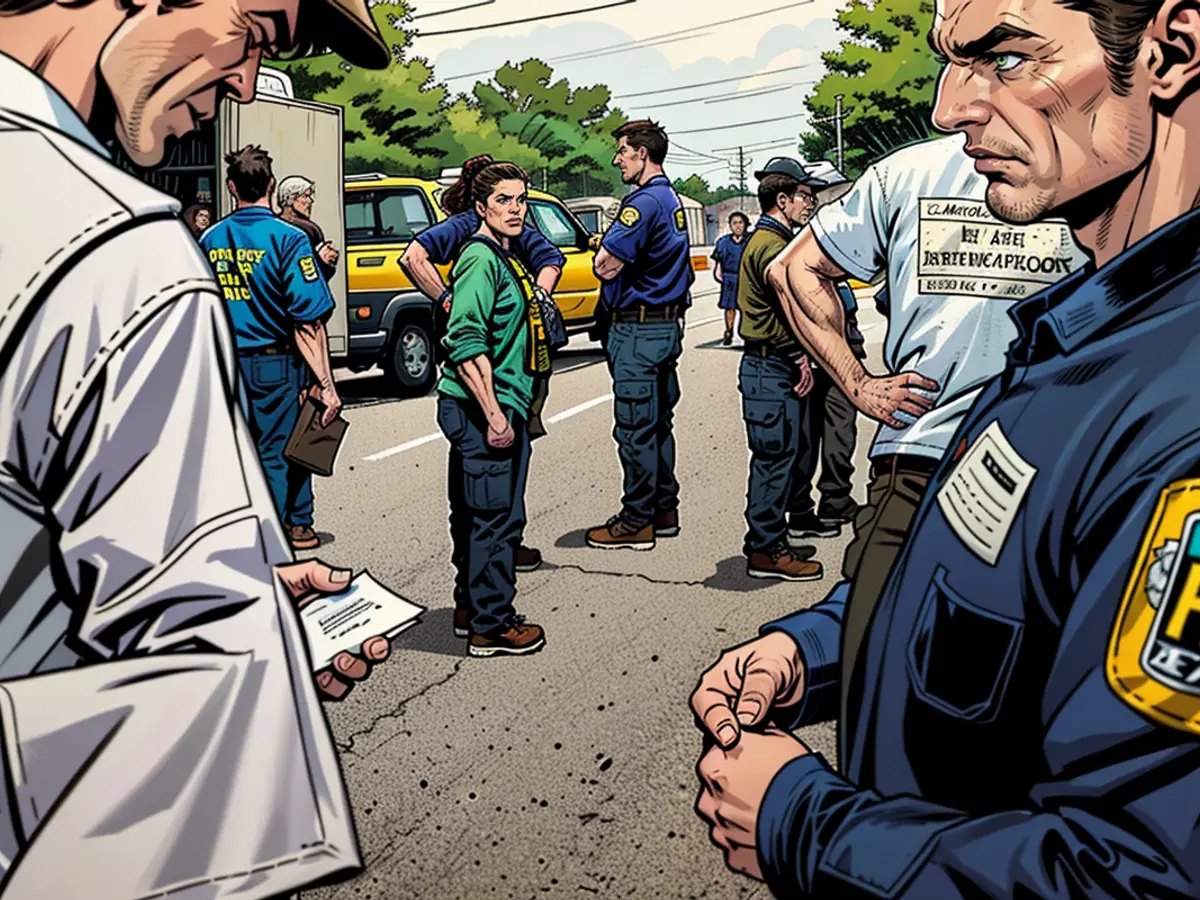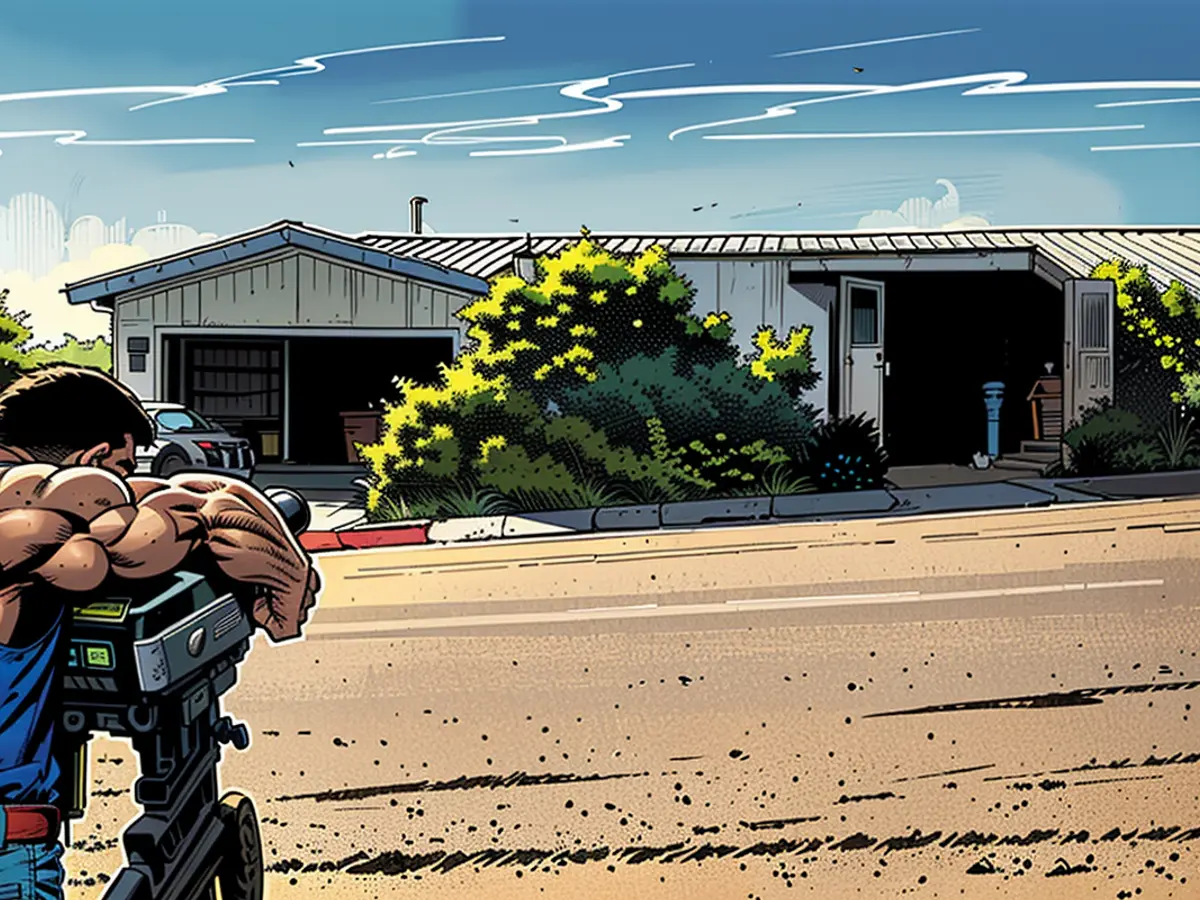IS AMERICA READY FOR DISASTER?
- This CNN Opinion series brings you expert viewpoints on how we can better prepare for catastrophes:
- The billion-dollar disasters around the corner
- In the blink of an eye, a wildfire changed everything
- It’s time to evacuate. But why won’t people flee the encroaching disaster?
Opinion: Our disaster responders are exhausted. This puts Americans at risk
As a former administrator of the Federal Emergency Management Agency (FEMA), I’ve experienced a wide variety of disasters up close, including hurricanes, wildfires and a pandemic. I’ve worked with the best of the best in the field of emergency management, and I know firsthand what a difference having dedicated disaster response professionals can make. I’ve also seen the toll that the stress of unrelenting disasters can take on these responders.
When catastrophe arrives at your doorstep, you need someone who is dedicated to helping. That’s what emergency management professionals do: help people before, during and after disasters. When a hurricane, wildfire, flood or tornado pays a visit, emergency managers are the ones who are there to clean up the mess, restore order and help the community gain a sense of normality afterward.
But in recent years, emergency managers have been asked to deal with a growing roster of disasters, crises and priorities, many beyond our traditional roles.

We have been tasked with managing outbreaks of diseases like Covid-19, mpox and Ebola, providing support at the southern border, handling refugee resettlement and the crisis of homelessness — and every time, our profession rises to the occasion and figures it out. We’ve been called on by presidents and county managers, governors and mayors, tribal chiefs and business leaders to solve incredibly complex and difficult problems.
Saying “no” or providing a halfhearted response is not in our DNA, even when the disaster hits too close to home. Dozens of emergency responders to the devastating 2018 Camp Fire in Paradise, California, for example, lost their own homes in the blaze yet continued to report for duty and help others.
No matter how exhausted we are or how little we have left to give, we are wired to step up and give even more when disaster strikes.
However, we have a growing problem: Our unsung American heroes are worn out — and some are even leaving the disaster response workforce. We are losing more and more of our emergency managers to chronic disaster fatigue, as evidenced by staffing shortfalls at FEMA.
A 2023 report by the Government Accountability Office (GAO) found that, at the beginning of 2022, FEMA’s disaster workforce was operating at approximately 65% capacity. At the same time, the prescient report states, FEMA faced “an all-time high in disasters and an unparalleled demand on its workforce.”
The agency was hit hard by losing 20% of its disaster workforce staff in fiscal year 2020. GAO noted that FEMA’s responsibilities to respond to the pandemic as well as natural disasters “created burnout for many employees and increased employee attrition.” And those who have stayed admit exhaustion while holding fast to their commitment to serve others. Having led many disaster responses over the years, I have had to tell some of my best people to go home in the middle of the response.
Responders are carrying the physical fatigue of weathering long hours and difficult working conditions, and that’s too often compounded by the mental burden of seeing and experiencing trauma. Estimates of the depression rate among disaster response and rescue workers are as high as 53%, according to the National Center for PTSD. After Hurricane Katrina, research on its mental health effects on responders showed that more than a quarter of them reported that they had traumatic experiences such as witnessing death or seeing a friend injured; at least a tenth of the responders reported persistent significant post-traumatic stress symptoms.
Burnout, which experts define as “a psychological syndrome emerging as a prolonged response to chronic interpersonal stressors on the job,” is dangerous. A burned-out emergency manager is likely to have difficulty making clear decisions and can struggle with mental well-being, which can adversely affect their job performance. Individuals experiencing burnout can also bring down the morale of a team and undermine organizational performance. On a personal level, burnout has the potential to decrease both longevity and quality of life, in addition to having negative effects on personal health and family relationships.
A study reviewing the state of the disaster workforce published in the Journal of Emergency Management in 2021 found that half of the respondents felt burned out or overextended (at high risk of burnout), reporting symptoms of high emotional exhaustion and cynicism as well as reduced efficacy on the job.
An emergency management workforce struggling with burnout will not be ready to tackle the inevitable disasters on the horizon.

There’s no longer any time to catch our breath between disasters. When one disaster or crisis appears to be over, another emerges on the horizon. The demands on the profession have increased from seemingly every direction.
First, the sheer volume of natural disasters continues to multiply. The number of disasters, the intensity, the cost and the frequency have become bone-crushing. Just look at the history of disasters over the past 30 years. According to the National Centers for Environmental Information (NCEI), since 1980 the US has been hit by 387 weather/climate disaster events with losses exceeding $1 billion each. In the 10 years from 1980 to 1989, we averaged a bit fewer than four billion-dollar disasters per year. If you fast-forward 30 years to 2019, we started averaging 22 billion-dollar disasters per year.
With 11 billion-dollar disasters in 2024 and hurricane season just over a month old, we are already on track to surpass last year’s record of 28 events. And the overwhelming majority of disasters such as floods and storms never reach the threshold for a federal disaster declaration, which activates federal aid.
But no matter what size disasters are or the designation they are given, responding to them takes time, energy and resources. Even if you set aside the unsustainable financial cost of disasters and the changing climate driving them, the disaster workload and the human cost on our emergency managers has become untenable.
Second, the persistent addition of non-traditional mission assignments such as managing the opioid crisis or housing instability has further drained our resources.
The recent increase in disaster workload has been playing out against the backdrop of a profession that has been perennially underfunded and understaffed.
When you add in a demanding and unforgiving public and a hyperconnected, sensationalist media landscape, the often-misunderstood job of emergency management becomes exponentially more complex and challenging. We have always shouldered, and will continue to shoulder, a disproportionate amount of responsibility for our increasingly complex and demanding world.
We are losing good people in the profession, and the safety and security of our communities is at stake. Over the past few years, I have talked to many of my counterparts across the country about this attrition as disasters increase. They see what I’m seeing: Good emergency managers are leaving for better pay and the slower pace of the private sector, while others are transferring into less-demanding 9-to-5jobs in other government agencies. Others have decided to retire early.
In the middle of a crisis, we need experienced and expert professionals. If we lose those professionals, we lose the ability to take decisive action in critical moments — which can make the outcome of a disaster or crisis worse.
We need to right the ship. Otherwise, the emergency management systems we rely on will fail when our citizens, the community and the nation need them the most.
The people who rely on responders for rescue and shelter when disaster strikes should be part of this solution. Call your local, state and federal legislators and demand they make disaster relief a priority. Ask them to properly fund and staff our emergency management organizations, such as FEMA and local agencies.
Get our free weekly newsletter
- Sign up for CNN Opinion’s newsletter.
- Join us on Twitter and Facebook
Help reduce the burden on the emergency management community by taking simple actions to prepare yourself, your family, your business and your community for the next disaster. A great place to start is ready.gov. As citizens, we have a duty to conserve our vital and limited public safety resources, such as emergency management personnel. By minimizing non-essential requests, we enable our disaster responders to more swiftly and effectively act during ongoing crises.
Recognize the role emergency management professionals play in keeping us safe and returning our communities to a sense of normalcy after a devastating disaster. Ask your representatives to acknowledge the importance of their work. And take a moment to thank them.
On our worst days, we need disaster responders at their best.
Despite facing exhaustion and trauma, emergency responders continue to show resilience and dedication, often reporting for duty even after losing their own homes in disasters. However, the growing problem is chronic disaster fatigue, leading to staffing shortfalls at organizations like FEMA. A 2023 report by the Government Accountability Office found that FEMA's disaster workforce was operating at approximately 65% capacity.
The high depression rate among disaster response and rescue workers, according to the National Center for PTSD, is a result of burnout, which can negatively impact job performance and personal well-being. The ongoing demands on the profession, including the rising frequency and intensity of billion-dollar disasters, have made the disaster workload untenable.
(Note: The second sentence here doesn't explicitly contain the word "opinions", but it does discuss a report, which is a type of opinionated analysis or interpretation, thus relating to the topic of 'opinions' in the broader context of disaster management and preparedness)







